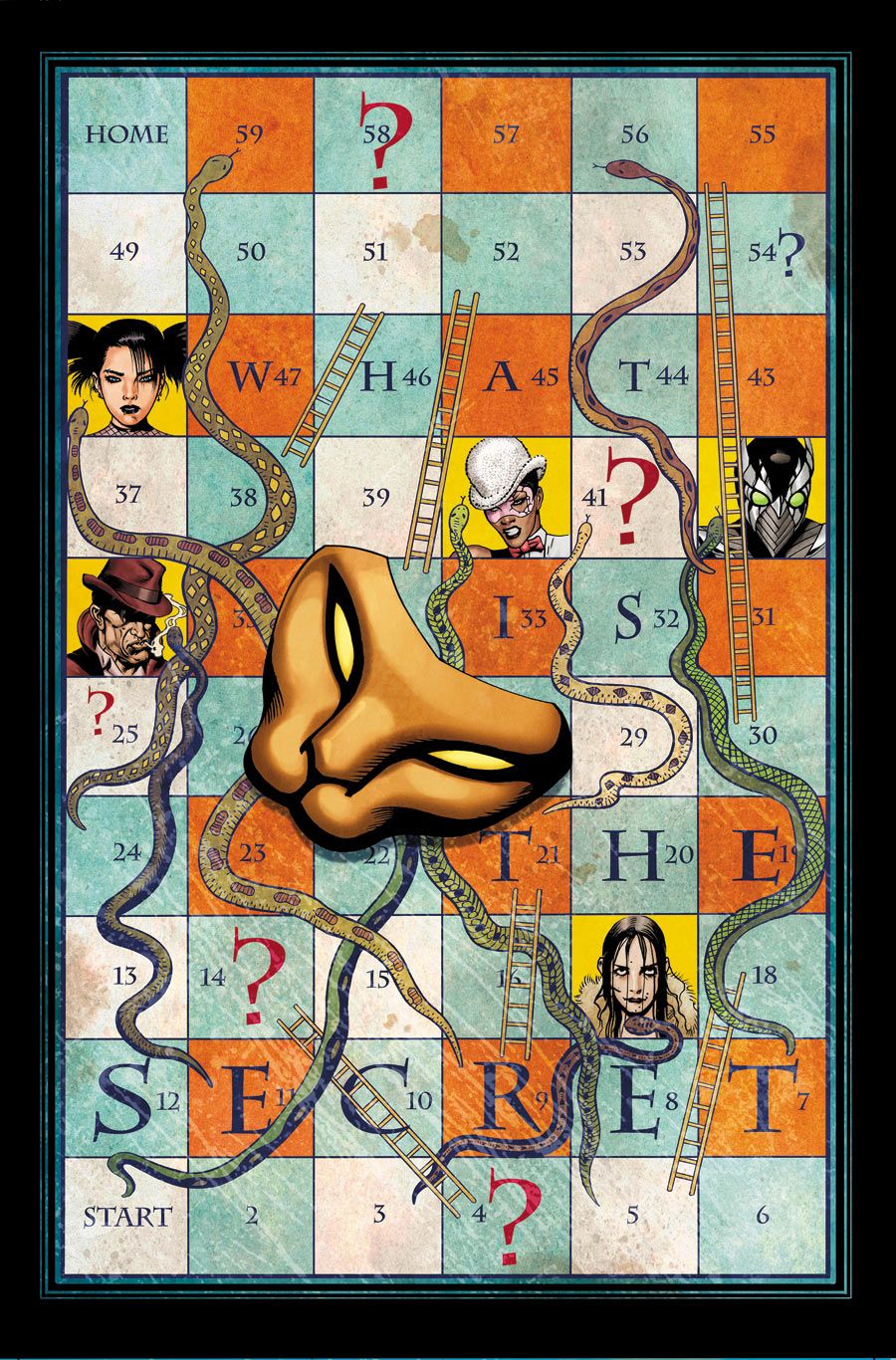When DC Comics rebooted its line a few years ago, "Secret Six" was quietly shuffled away, replaced in part by the return of "Suicide Squad." It's a pleasure to see "Secret Six" back, courtesy Gail Simone (who wrote the modern rendition for many years, pre-reboot), Ken Lashley and Drew Geraci. The new line-up is mostly new, but the same basic tone is still present.
"Secret Six" opens with one of the cast members getting "collected" by a mysterious agency, and then moved to a mostly empty room with five other prisoners and a strange voice issuing demands and questions. It's a classic setup, one that allows readers to get to know the characters without being distracted by surroundings or other cast members. That's a good thing, even for long-time readers of the old "Secret Six." Two characters are brand new, two others have no connection to the old group, and a fifth was only a tangential member of the team for a short period of time.
The one thing that hasn't changed is that the sixth character, Catman, is still the center of the title. For a character that had been little more than a joke prior to Simone using him in "Villains United" (the pre-"Secret Six" mini-series), it's always a pleasure to see the character with real menace to him, a compelling figure despite the cheesy name. Here, it feels like Simone is taking advantage of being back at square one to emphasize things that were merely alluded to in the past. Catman's speculated bisexuality is now front and center, and his mental instability that developed over time is also appearing much faster.
There's also still a strong menacing tone to "Secret Six," which works well. Catman heads into action fairly quickly, and shows how dangerous he is. But with the other five characters, the emotion runs thick. Ventriloquist comes off as genuinely unhinged here, and there's a danger to characters like Porcelain and Strix even with more pleasant demeanors. Black Alice's quick temper also turns her from somewhat charming to a danger, and of course with everyone locked in the same room, there's also a great amount of danger to all involved. And of course, there are also the mysterious captors, who are unseen but are already putting our characters through their paces and some truly awful demands. This isn't a bright and cheery book by any stretch of the imagination, but it's compelling.
The art in "Secret Six" #1 is a bit uneven, unfortunately, in what is primarily due to a textbook example of two different inking styles. Lashley inks his own pencils on some of the pages, while on others it's Geraci. Unfortunately, the two styles do not match at all. What I'm assuming are Lashley's pages inked by himself come first, and it's a very rough, scratchy style. It'll bring to mind what happens when people like Bill Sienkiewicz or Klaus Janson ink other artists' work. The faces are strong and expressive, even as they're surrounded with rough-hewn angles and edges. It's a very different look to the title from what could be called the general superhero house style these days. Pages 13-19 are presumably inked by Geraci, though, and it's a much cleaner and smoother look. It's a traditional and standard look; it's nothing against Geraci but it's also a much less interesting finish after seeing those earlier pages. (Having Lashley ink page 20 to wrap up the first issue makes the clash between the two styles that much more apparent, suddenly shifting back into the rougher, grubbier look.)
More importantly, the cleaner inks betray problems with Lashley's pencils that were somewhat disguised by the rougher look. The first is a general lack of backgrounds. After the first five pages, backgrounds begin to vanish quite rapidly from the panels, in favor of smears of color on ink washes (on Lashley's inks), or even just a solid color with no texture at all (on Geraci's inks). There's also the occasional problem with perspective here, perhaps due to some mistakes with panel layouts. On page 16, for example, when Catman and Black Alice are talking, the "I can do pretty much anything" panel looks like Alice has suddenly grown to a massive size, with her head three times the size of Catman's head and shoulders. It's only when you look closer that you realize that Catman's supposed to be in the far background, and that the perspective is merely shot. Likewise, when Catman is clawing at the wall on page 19, it looks strangely curved (even though the room has been shown to be shaped like a box), and Strix is supposed to be far away from Catman and Big Shot, but instead she's almost like a little chimpanzee perched on Big Shot's shoulder because of the lack of perspective.
The artistic glitches are ultimately frustrating because they're dragging down a really solid opening script from Simone. I definitely want to read more of "Secret Six," and I think it has some real potential. But the art needs a more consistent look (and a single inker), in order to turn this book from a simple thumbs up to a genuine wow.

